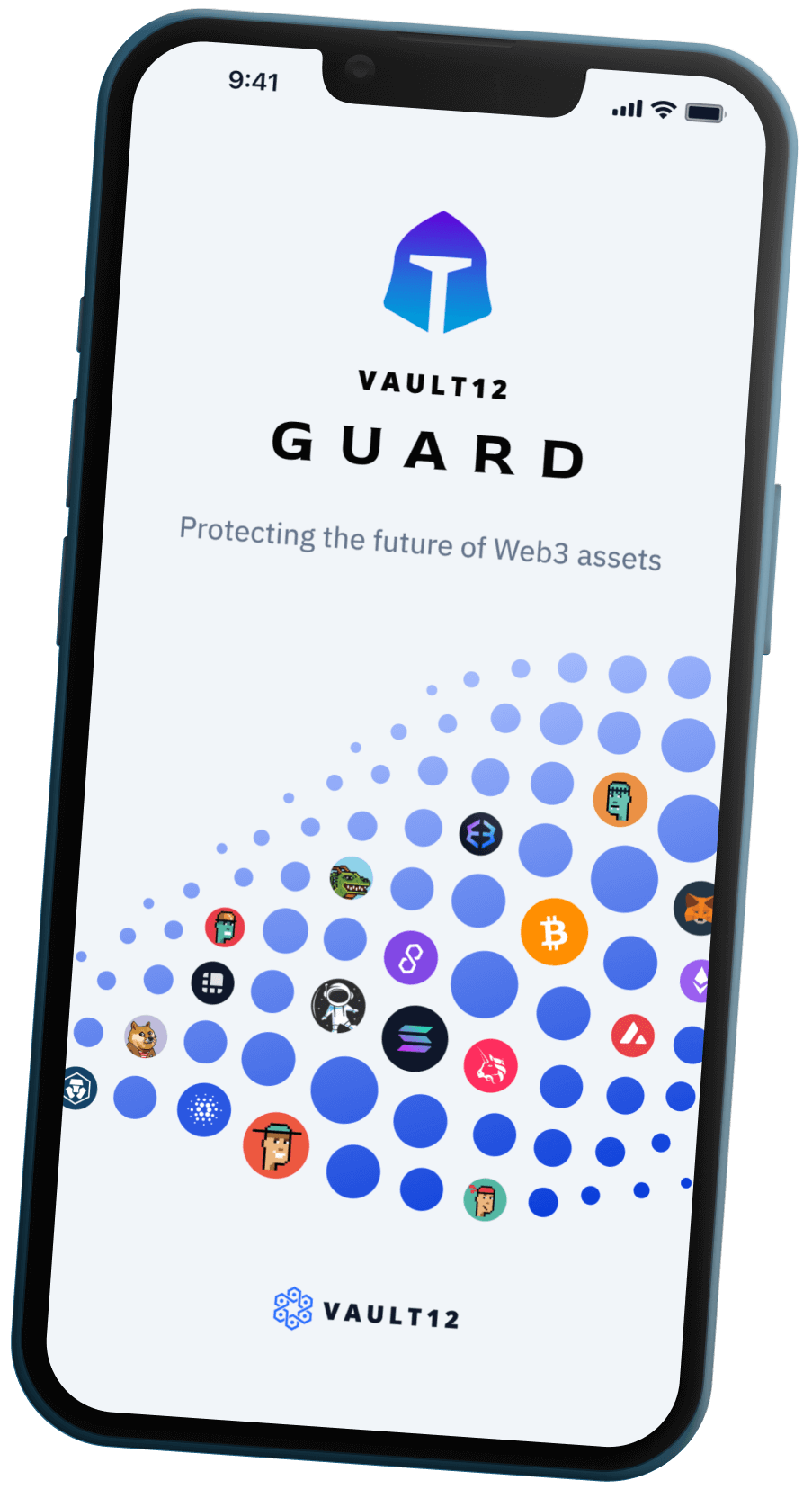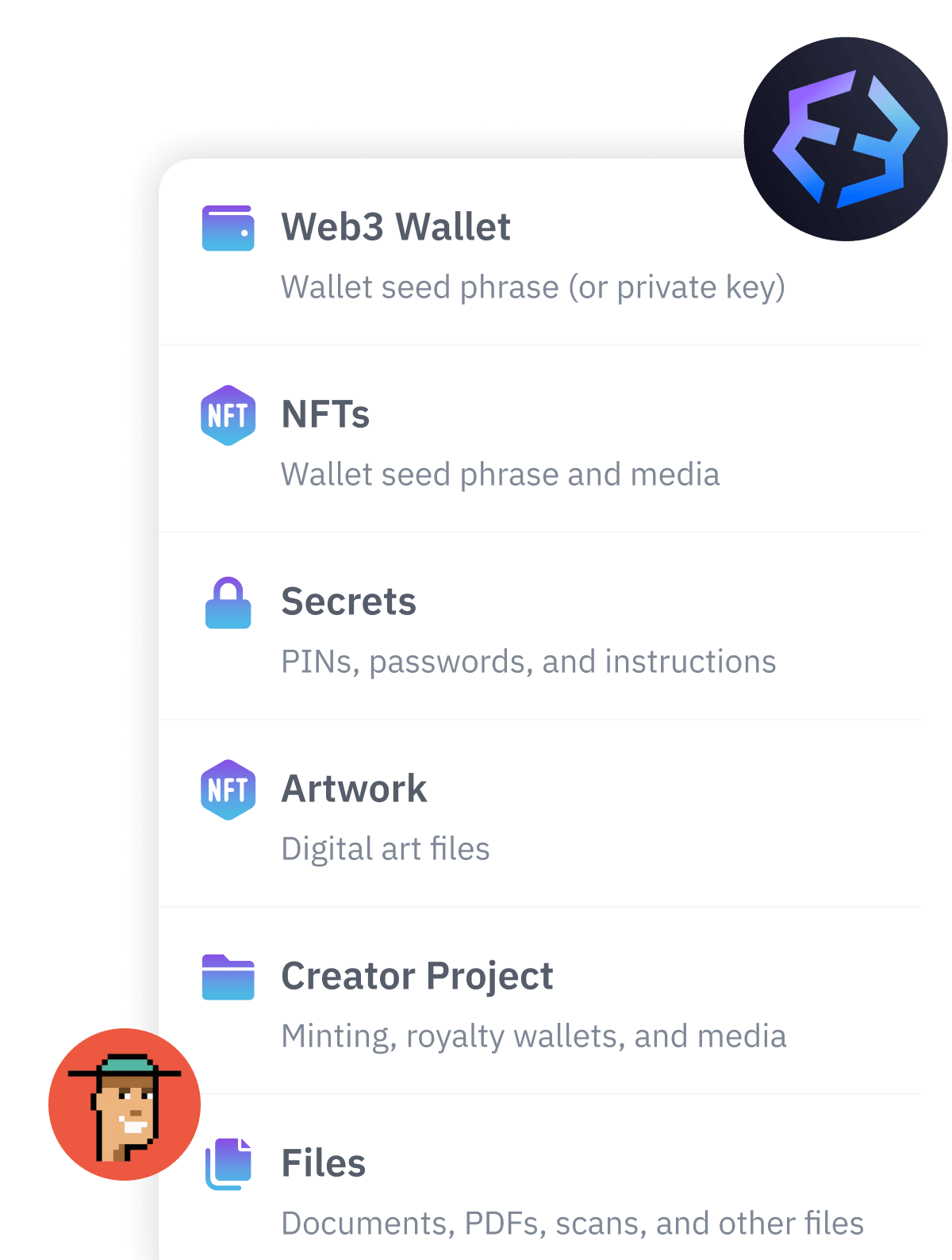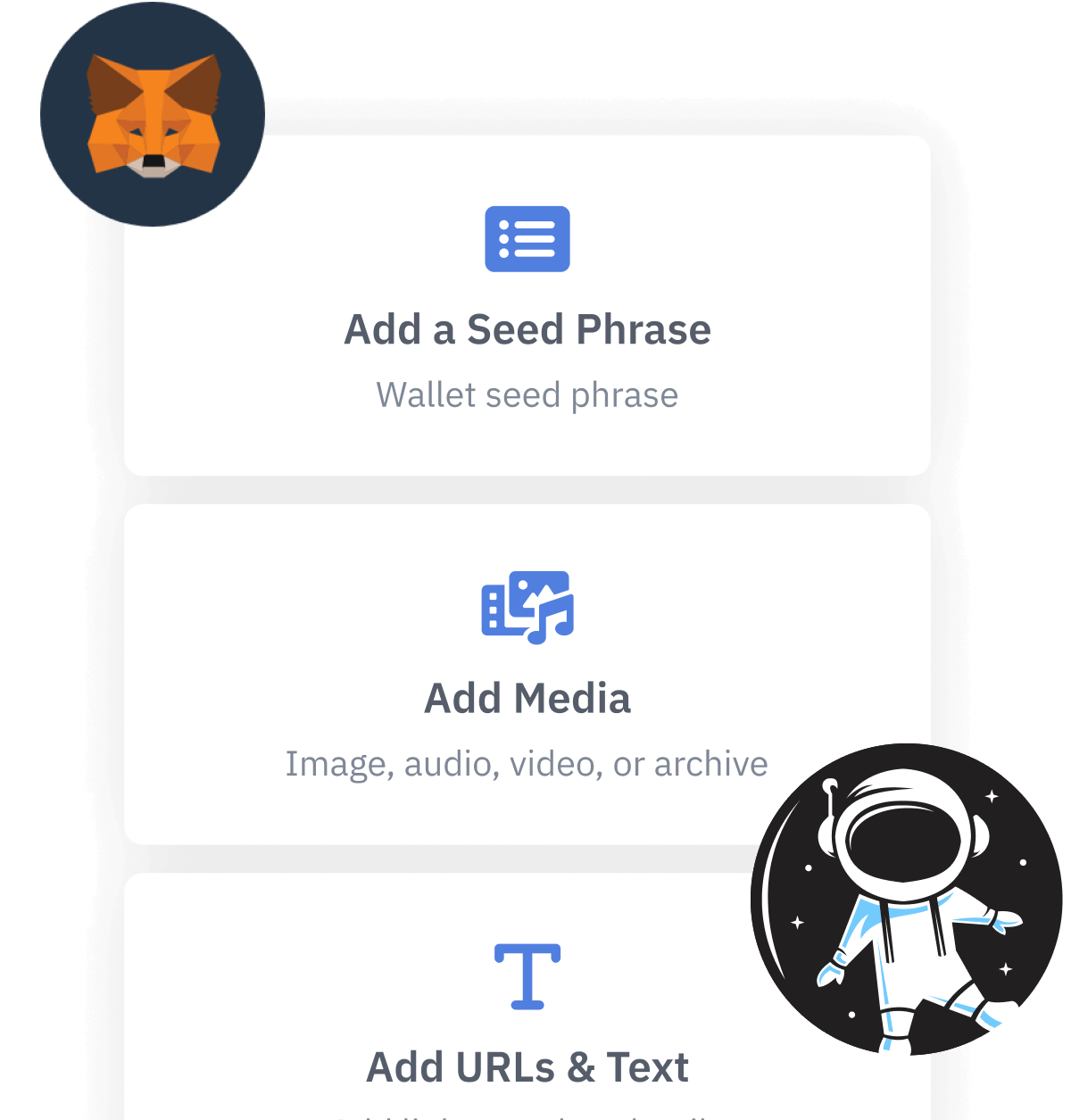
Contents
- How to Inherit Staked Crypto: Traditional vs Liquid Staking
- 🔐 Traditional Staking: Locked but Rewarding
- Common Examples:
- Inheritance Considerations:
- How Vault12 Guard Helps:
- 💧 Liquid Staking: Inheriting Without Lockups
- Inheritance Considerations:
- How Vault12 Guard Helps:
- ⚖️ Traditional vs Liquid Staking: Inheritance Comparison
- 📘 Best Practices for Inheriting Staked Assets
- 🧭 Final Thoughts
Staked crypto assets need inheritance too
DeFi assets in your wallet or staked - remember to back them up.
The world of digital assets is complicated. Understanding how to access, trade, and secure these assets is enough information to fill a book or two. This leads to an already steep learning curve for new users who may inherit these assets upon the passing of a loved one.
Not only can accessing the assets be complex, but you may not be the only one with access to your loved one's assets. Welcome to the world of Decentralized Finance (DeFi for short) and one of its first introductory functions: staking.
How to Inherit Staked Crypto: Traditional vs Liquid Staking
Staking is one of the most popular ways to earn yield on crypto assets, but few people think about what happens to those assets if the owner passes away. While staking can be a powerful tool for compounding returns, it introduces real danger of assets loss when it comes to inheritance.
In this article, we’ll walk through the two primary forms of staking — traditional (locked) staking and liquid staking — and explore what it takes to ensure they can be passed on securely and reliably. Whether you’re planning your estate or helping someone else manage theirs, knowing the difference matters.
🔐 Traditional Staking: Locked but Rewarding
In traditional staking, crypto assets are locked with a validator to help secure a proof-of-stake blockchain. While this earns staking rewards, the assets typically cannot be moved or used during the staking period, and there is often a mandatory “unbonding” delay when unstaking (ranging from a few days to several weeks).
Common Examples:
- ETH staked directly on Ethereum via a validator.
- SOL staked with a validator through SolFlare or Phantom.
- ATOM staked using the Cosmos Hub.
Inheritance Considerations:
How Vault12 Guard Helps:
Vault12 Guard enables the secure backup of private keys, seed phrases, and unstaking instructions, even if the original staking setup is complex. By storing all access materials offline in a decentralized, tamper-proof format, Vault12 Guard ensures that heirs can retrieve and unlock these assets when the time comes — without compromising security beforehand.
💧 Liquid Staking: Inheriting Without Lockups
Liquid staking offers an alternative: instead of locking tokens with a validator, users stake through a protocol (like Lido or Marinade) and receive liquid tokens in return — such as stETH for staked ETH via Lido Protocol, or mSOL for staked SOL. These tokens earn staking rewards and remain transferable, allowing holders to use them in DeFi while still compounding yield.
Inheritance Considerations:
How Vault12 Guard Helps:
Because liquid staking tokens are stored in wallets like any other crypto asset, they can be protected using the same Guard setup. Vault12 Guard secures access to the wallet containing these tokens, and can also store explanatory notes about what the tokens represent and how to use or convert them.
This ensures that even non-technical heirs can understand what they’ve inherited — and how to recover the full value.
⚖️ Traditional vs Liquid Staking: Inheritance Comparison
| Feature | Traditional Staking | Liquid Staking |
|---|---|---|
| Token Accessibility | Locked until unstaked | Transferable anytime |
| Technical Knowledge Needed | High (unstaking, validator selection) | Moderate (DeFi familiarity helps) |
| Inheritance Complexity | Higher | Lower |
| Smart Contract Risk | Minimal | Moderate (depends on provider) |
| Compatible with Vault12 Guard | ✅ Yes | ✅ Yes |
📘 Best Practices for Inheriting Staked Assets
Regardless of how your assets are staked, inheritance comes down to access and understanding:- Avoid reliance on exchanges: Custodial services may have inheritance policies (and may not), but if they do, they often require an enormous amount of legal hoops — or worse, a cross-border regulatory nightmare. Not to mention that it depends on the platform staying operational. Self-custody with Vault12 Guard frees your assets’ longevity from all those factors and gives you full control.
- Check compatibility: Due to architectural choices, Vault12 Guard is the only known solution to date for backup and inheritance that is officially compatible with inheriting staking and DeFi positions.
- Secure the keys: Vault12 Guard can store your wallet’s seed phrase, hardware device backup, or passcodes — all offline and under your control.
- Provide context: A secure note in Vault12 Guard can explain staking positions, validator choices, and steps for unstaking or liquidating.
- Test your plan: Ensure your heirs understand the recovery process — or rehearse it with a trusted person while you’re alive.
🧭 Final Thoughts
Whether your assets are traditionally staked or in liquid form, they represent long-term value — and that value deserves a secure, intentional inheritance path. By combining staking strategies with decentralized inheritance planning using Vault12 Guard, you can ensure that your assets outlive you, and remain protected for the people you choose.
Inheritance doesn’t have to be a vulnerability. With the right tools and mindset, it can be a legacy.
Staked crypto assets need inheritance too
DeFi assets in your wallet or staked - remember to back them up.

Wasim Ahmad
Wasim Ahmad is a serial entrepreneur and an advisor in the fields of AI, blockchain, cryptocurrency, and encryption solutions. At Vault12, the pioneer of crypto inheritance, he led private and public fundraising efforts and focuses today on expanding the Vault12 ecosystem. In addition, he is a producer of the upcoming movie 'The Bitcoin Executor'.
His crypto experience began with AlphaPoint, where he worked with the founding team to launch the world's first crypto trading exchanges. Previously he was a founding member of Voltage Security, a spinout from Stanford University, that launched Identity-Based Encryption (IBE), a breakthrough in Public Key Cryptography, and pioneered the use of sophisticated data encryption to protect sensitive data across the world's payment systems.
He has also been very involved with regulatory initiatives in both the US and the UK, providing feedback to the SEC and FCA respectively pushing for expanded momentum for innovation and startups within the regulatory frameworks of both countries.
Wasim served on the board of non-profit, StartOut, and is a Seedcamp and WeWork Labs global mentor.
Wasim graduated with a Bachelor of Science in Physics and French from the University of Sussex.

Art Krotou
Art is a crypto-security expert and researcher with serial entrepreneurship background. Having a degree in physics and experiences in multiple cutting-edge industries like fintech, secure hardware and semiconductors, and identity gave him a unique multi-faceted perspective on the problem of key management for individuals in the crypto networks and the evolution of the internet in general.
In his current work, he is specifically researching how cryptographic keys can be inherited without posing a threat to 3rd parties in edge cases. In addition, he advocates for "fault-tolerance via secrets automation". He discusses the quantitative impact of user experience factors on the uptake of non-custodial solutions.
As one of his most notable accomplishments, he co-founded and led through the early years of the company that contributed to the complex technology behind Apple's recent M-series CPUs. He is also the creator of the most friendly and aesthetically pleasing, but nonetheless super secure and fault-tolerant hardware wallet - U•HODL.
Check out his curated series of "Vault12 Learn" contributions below, and follow him on Twitter and LinkedIn for more sharp insights.
You will lose your Bitcoin and other crypto when you die...
...unless you set up Crypto Inheritance today.
It's simple — if you don't worry about crypto inheritance, nobody else will — not your software or hardware wallet vendors, not your exchanges, and not your wealth managers. So it's up to you to think about how to protect the generational wealth you have created, and reduce the risks around passing that crypto wealth on to your family and heirs. What are the challenges with crypto inheritance?
- Crypto Wallets are difficult to use and do not offer crypto inheritance management. In fact, most of them tell you to write down your seed phrase on a piece of paper, which is practically useless.
- Some people back up their wallet seed phrases or private keys on paper, local devices like hardware wallets or USBs, or in the cloud. All of these options have severe drawbacks that range from hacking to accidental loss to disrupted cloud services.
- Software wallets operate on specific blockchains, yet your crypto assets span multiple blockchains. For inheritance to work, you must be able to manage inheritance across every blockchain — now and forever.
DISCLAIMER: Vault12 is NOT a financial institution, cryptocurrency exchange, wallet provider, or custodian. We do NOT hold, transfer, manage, or have access to any user funds, tokens, cryptocurrencies, or digital assets. Vault12 is exclusively a non-custodial information security and backup tool that helps users securely store their own wallet seed phrases and private keys. We provide no financial services, asset management, transaction capabilities, or investment advice. Users maintain complete control of their assets at all times.
Pioneering Crypto Inheritance: Secure Quantum-safe Storage and Backup
Vault12 is the pioneer in Crypto Inheritance, offering a simple yet powerful way to designate a legacy contact and pass on your crypto assets—like Bitcoin (BTC), Ethereum (ETH) and Solana (SOL) —to future generations. Built for everyday users yet robust enough for the most seasoned crypto enthusiasts, Vault12 Guard ensures your wallet seed phrases and private keys are preserved in a fully self-sovereign manner, across all Blockchains.
At the heart of Vault12 Guard is quantum-resistant cryptography and a decentralized, peer-to-peer network of trusted Guardians. Your critical information is never stored in the cloud, on Vault12 servers, or even on local devices—dramatically reducing the risk of a single point of failure. By fusing a powerful software layer with the Secure Element of iOS devices (Secure Enclave) and Google devices (Strongbox), Vault12 Guard locks down your private keys against present and future threats.
Our innovative approach harnesses social recovery, enabling you to appoint one or more trusted individuals or mobile devices as Guardians. These Guardians collectively safeguard your protected seed phrases in a decentralized digital Vault—so there’s no need for constant lawyer updates or bulky paperwork. Should the unexpected happen, your chosen legacy contact can seamlessly inherit your crypto assets without compromising your privacy or security.
Preserve your digital wealth for generations to come with Vault12 Guard—the simplest, most secure way to manage crypto inheritance and backup.
Take the first step and back up your crypto wallets.
Designed to be used alongside traditional hardware and software crypto wallets, Vault12 Guard helps cryptocurrency owners back up their wallet seed phrases and private keys (assets) without storing anything in the cloud, or in any single location. This increases protection and decreases the risk of loss.
The first step in crypto Inheritance Management is making sure you have an up-to-date backup.
The Vault12 Guard app enables secure decentralized backups, and provides inheritance for all your seed phrases and private keys across any blockchain, including Bitcoin, Ethereum, and others, and for any crypto wallet.
Note: For anyone unfamiliar with cryptocurrencies, Vault12 refers to wallet seed phrases and private keys as assets, crypto assets, and digital assets. The Vault12 Guard app includes a software wallet that works alongside your Digital Vault. The primary purpose of this is to guard your Bitcoin (BTC) and Ethereum (ETH) wallet seed phrases, private keys, and other essential data, now and for future generations.











